In the ’90s, comic book artists were the most important creators in the industry. When Marvel’s top artistic talent, including Deadpool creator Rob Liefeld, decided they were fed up with royalties tied to certain characters and felt they were not earning a fair piece of the pie from their top-selling comics; Liefeld, Todd McFarlane, Jim Valentino, Jim Lee, Erik Larson, Whilce Portacio and Marc Silvestri decided to break free of The Big Two publishers and launch a company of their own: Image Comics.
Monday night’s Robert Kirkman’s Secret History of Comics episode on AMC contains a detailed account of the creators’ thoughts behind the time and, just ahead of the episode, we got a chance to talk to Rob Liefeld about Image Comics in his own words.
Alexander Jones: It is incredible to see the birth of Image again in this Monday’s Robert Kirkman’s Secret History of Comics episode. When the people of AMC first asked you questions about the story or the interview, was there any kind of new or fresh thoughts that you had about the process in general of forming Image?
Rob Liefeld: There has been a whole lot of reflection in the 25 years that passed. I have to tell you, I remember that stuff like it happened yesterday; I always enjoy discussing it. I feel that I have a new perspective and I love talking about it. It was the highlight of my career.
Jones: It really is an incredible story. Another aspect of the episode I wanted to touch was how the various Image founders were referencing Jack Kirby, I was wondering if there was a particular deal or interview that you saw where Kirby wasn’t given the royalties for creating these characters that in turn inspired Image?
Liefeld: As far as Jack goes, we all recognized what had happened with Jack. I have to be honest, when I was starting out, Jack was ironically the face of creators’ rights. In the middle of my most rabid comic book collecting period, he wrote those specific comics. When I was taking in his X-Men and Fantastic Four—all this stuff that was before his Legacy books at Marvel—the direct market was new; it was fresh and it was thriving. I liked his Pacific Comics whether it was Captain Victory or Silver Star. I started collecting comics in 1974 and Jack did a whole run on Captain America in 1976 for the bicentennial [and] he was reunited with his biggest creation. Jack had a huge run! I bought all of the Kirby comics at Marvel so I thought: Wow! Jack Kirby is doing his own comic and has his own company with Pacific Comics which wasn’t true but regardless he owned Captain Victory.
Jack was a beacon to us. We didn’t look at him like ‘Oh, this guy got screwed or You know missed out on Marvel’. I thought: ‘Man, Kirby knocked the door down and he is doing creator-owned work.’ That was when Mike Grell launched Starslayer and eventually give rise to Pacific Comics which was more of an inspiration to what we were doing. I had seen some of the biggest names in my youth when I was 13 go off on their own. I had started briefly in independent comics so going back to it held no intimidation whatsoever. I thought I can do anything I want. Even though we were working at Marvel at the time, the independent marketplace was thriving with those comics–Comico, Dark Horse, Eclipse Comics, there were so many options. That’s my bloated answer.
Jones: That’s great! It seems like something you didn’t get a chance to touch on in the show.
Liefeld: When they edit an episode down to 60 minutes, it is all about the highlights. I think they did a good job (kind of) shaping the narrative. You get a good idea of the time and what was going on at the time and the pratfalls.
Jones: Touching on each and every founder and Robert as well.
Liefeld: It reflected the time wonderfully. Like I said: those are great times! The one thing I find myself emphasizing, again and again, is that I live in facts. I don’t live in wishful thinking. The fact is, that was one of the reasons why I was so bold and able to shoot out of a rocket while everyone else was so indecisive. I have said this several times and I think I get them all mixed up, but there is a reason why Youngblood was alone in solicitations for several months because there was so much uncertainty on the other guy’s parts. Here’s the thing you have to understand: New Mutants was a straight up dog when I took it over. That’s why I took it. They told me you are probably getting canceled. It was the definition of a fixer-upper and lagging so hard behind in sales of X-Factor and Wolverine and all the other X-Men titles.
Look what I did with New Mutants. The first thing I did in the first issue was introduce Cable and eleven new villains. In my first issue, I land with twelve new characters and I was off to the races with Deadpool, Domino, Shatterstar, Feral, and all these characters. The next thing that happens was that the book became a top seller like Wolverine or Spider-Man. I had to make my way with Rictor and Boom Boom. That will give you a different confidence level. When they hesitated at the last minute when I was trying to introduce Cable I told them; you are going to let me do what I am going to do or I’m not going to do it. They trusted me and I turned that book around. The last issue of New Mutants #100 has no gimmicks whatsoever. It went back to press four times–the purple cover, the gold cover, the silver color and the bronze cover. It sold a million copies. It may not be my best achievement, but it is my favorite achievement. It was a double-sized ending to a series knowing that something new was going to come of it, but it sold and thrived on content only. You have to believe I was confident because then, I was told that for X-Force, I should lower my expectations. They said, ‘Nobody knows what an X-Force is and it is not going to do very well.’
I’m raring to go, I have a bucket of twenty-five characters as I emphasized several times, I have no animosity whatsoever with Marvel and the partnership. I looked over the deal that they had for new characters and I thought; man if a couple of these characters hit it big, I’m looking good, this is a good deal. At the time, when I’m in the middle of X-Force, I thought that I could either do ten more years of X-Force or I could make content for myself. From now on, I’m going to have a giant equity. Working at Marvel or DC, you are the minority and they are the majority. It doesn’t make them bad, it is just part of the deal. I didn’t feel like I followed up X-Force with anything less than something I create. That is the beauty of Image Comics to this day. I was on the phone about a bunch of Extreme Studios titles an hour ago, 20-something years later I’m talking about content that I created that I now control. Honestly, I’m going to give good work. The first year of Image titles… we were all trying to do outdo each other. I think they are ridiculously fun and exciting comics books because we were having a good time. Controlling your own destiny does that to you.
Jones: Did you say that there were a few months where the rest of the founders were afraid to solicit their first books?
Liefeld: I did in fact. The facts line up that Youngblood was the only Image comic solicited for three months. Todd [McFarlane] had retired, he had left Spider-Man. He left Spider-Man with the X-Force crossover and I continued on with X-Force until issue #10 or #11. Todd was not working at the time and he was considering his options and rightfully so (he’s got every right to do that). Erik Larson and Jim Valentino were committed to doing this. Todd came around with issue #4. But, I have to be honest, I have said this time and again: when the sales came back on Youngblood #1, given the competitive edge that our peer group had, everybody was like I think you are better than Rob. They thought if Rob is getting those numbers, then I should be good to go. But yes, Youngblood was 100% the only Image comic in the catalog.
Then Spawn came along. We were off to the races then. Jim Lee was the last to come on board. That’s a historical fact. He was, I think, Marvel’s most coveted piece of talent and they really did their best for him not to leave. I think for the rest of us they just thought; the crazies are out of the building we are so excited. Jim was somebody they wanted to hang onto and they thought the notion of him leaving (was hard.) I know for a fact that it was hard for him because they made him the best deal for more creative control and more money and more power. Eventually, I think he reconciled that he couldn’t let us go off and have fun without him.
Jones: That’s fascinating. I actually didn’t know they had tried to keep him with a better deal.
Liefeld: Here’s the deal: Before he left, I knew he was leaving. It just took a few months more. It was the seven of us, and there were the six of us. I don’t really understand what happened with Whilce [Portacio]. He was with us and then he wasn’t a founder, I don’t know what happened but it then became the six of us as partners and not Whilce, but soon there’s Top Cow, there’s Extreme, there’s WildStorm–Erik Larson called himself High-Brow Entertainment. We all had these separate labels so we were serving multiple interests. I put the Extreme Studios logo on the cover of all my books. You know that caused a meeting: ‘Hey everybody we have to meet. What’s going on? Is this a good idea? Should Rob be doing this?’
The competitiveness never went away. We’re going to be sharing all the documents people have never seen on social media. I had already moved my books. I had a second label that I had done Battlestar Galactica and Avengelyne through called Maximum Press (I created that in ‘94). I took a lot of the original Image titles that I started like Youngblood, Supreme, and Prophet and I threw them over to Maximum Press. That doesn’t happen overnight. You have to plan that in June, hand it in July. I will be sending those Maximum Press ads that a lot of people haven’t seen or wouldn’t be alive to remember (on social media) and the letter I got from Todd saying ‘put your book back or we’re going to have to take action against you.’ Yeah, ‘I’m not putting my books back.’ There was a growing sense of maybe we’d outgrown each other and animosity and I think it is not a coincidence that when bands tour, at the end of the tour they break up. ‘92 to ‘95 was the most intense touring of a rock band that you could ever possibly imagine.
We saw each other on the road at conventions, shows, meetings, and I think there was a point where Marc Silvestri and I were going to start our own company, as shocked as you may be to hear that. I went to Santa Monica and we had meetings with them. Matt Hawkins was there. We talked about merging our two companies and then getting a big toy deal and a movie deal–I like to call moments like these “The Shenanigans.” We have a lot of shenanigans–like when Todd showed up with a toy company one day. He had completely kept that from everybody. And when he showed up I was thrilled, like Oh my God, because I didn’t like any of the toy companies that I was talking to and the idea that now I can have my toys made through Todd… Perfect. Awesome. I will tell you, there were a couple of owners that I thought were going to need medical assistance because they turned white as a sheet: What does this mean? I was sitting there with an offer from Mattel, not liking anything that Mattel was going to give me from a sculpting and execution phase. With Todd having a toy company that solicited through Image to help us at the company, that’s an example of something that not everybody was excited for. Other guys felt threatened by it. We all didn’t want the same thing.
I would call that growing pains because the first year and a half of Image was all a blur. Everything was happening so fast, so big, so loud. The fact that we got everything done was a miracle. I’m not sure if you are aware of this, but in August 1992, we were the #2 comic book company with six comics. Don’t you think DC Comics had a dark day with sixty comics to be outsold by six guys at Image? We were rocking and rolling, baby. There were cracks in the comic book industry. Those cracks were named Rob, Todd, Jim, Marc, Valentino and Erik Larson. It was heavy days, fun times great adoration, I mean, all the stuff that can screw you up. The fact that one of us didn’t overdose on drugs was a great surprise. We weren’t doing lines in the back of the studio you know. I think Jim went from Jim Lee to WildStorm with 50 employees. I went from Rob Liefeld to Rob Liefeld with sixty-six employees. At our peak, I produced twenty-two comics a month for about a sixteen-month period. These were crazy days. They were great. I’m glad I did it and it is wonderful. There was nothing I wouldn’t do the same.
Jones: I’m not sure if the direct market is ever going to see that kind of sales ever again.
Liefeld: For me, the chance was with Star Wars #1 two years ago. They got sixty covers. I love variant covers, so let’s make it very clear I love variants. I think I own fifty-five of those sixty Star Wars #1 covers. I thought for sure, we were looking at a million-selling comics with all the retail variants and incentive variants and the return of Star Wars to Marvel. When that didn’t break a million copies, I felt like that was a better sign of the times than anything. The biggest brand in pop culture with sixty covers. The market is also split up now: there are trade waiters and those people only want to buy it when it has six issues glued together.
There’s a digital market and, as somebody who gets royalties and statements from all these different avenues, the comics are still ridiculously successful. It’s not so much about numbers as it is about impact. Certainly, The Walking Dead does not sell a million copies a month but it is arguably not the biggest culturally impactful comic book properties of the last fifteen years.
The bottom line is The Walking Dead is Image comics biggest presence in popular culture, that show is still getting ten million eyeballs. Nobody is going to apologize for that but it is the number one show on television for like six years. It has kept Image ridiculously relevant especially at the bookseller level. You’ve got all those trade paperbacks that are selling like hotcakes! I have been at Barnes and Noble at the manga section flipping through manga that I’m going to buy when I hear the clerk’s waive people over to The Walking Dead trade section. They don’t have the first three trades with the clerk assuring them that they can’t buy them themselves. The clerks have to rack them out immediately but they sell out as soon as they fill up. When I saw that take place, there were like twelve volumes of The Walking Dead. Now there are 26 volumes of The Walking Dead!The reason why I went to this place to talk about the millions in sales for 25 volumes of The Walking Dead at $20 each. That’s a lot of cheddar going through the system. It is making the bookseller money, it is making the retailer money.
I’m not sure whether it sells like that, but there are dollars being pushed in creator-owned. That’s what I try and tell young creators: If it’s not uncomfortable if you aren’t getting butterflies on some level, then you’re not growing. Being comfortable means a certain sense of reliability. No matter what, I figured I would sell 100,000 copies of Youngblood for a creator-owned book, I thought that was huge and that would give me an income that was commensurate with what I was getting from Marvel at the time selling 800,000 copies because I was going to get a $1 a book. I did not anticipate 1,000,000 copies. As we banded together and Image became a movement, the excitement would jump from 600,000 to 800,000 and 1,000,000 upon publication. I look back and am happy to be a part of it. I have been back at Image for 11 years, which I figured out the other day. It shocked me because it was 2006 when they called me up. Again, I have Robert Kirkman to thank for that. I was about to take my books to another publisher and that just freaked him out. He put together the mechanism for which I would take them to Image. I think it’s been a win-win for me.
Jones: What do you hope viewers take away from the episode?
Liefeld: I think the aspect of the show that the episode captured the most is how entertaining we all were and how entertaining that time was. I think you definitely get that. These are great stories that need to be told. I love that there is this show out there telling people what is behind their favorite pop culture.
The sixth episode of Robert Kirkman’s Secret History of Comics airs Monday, December 11 at 10 p.m. Pacific Time on AMC.



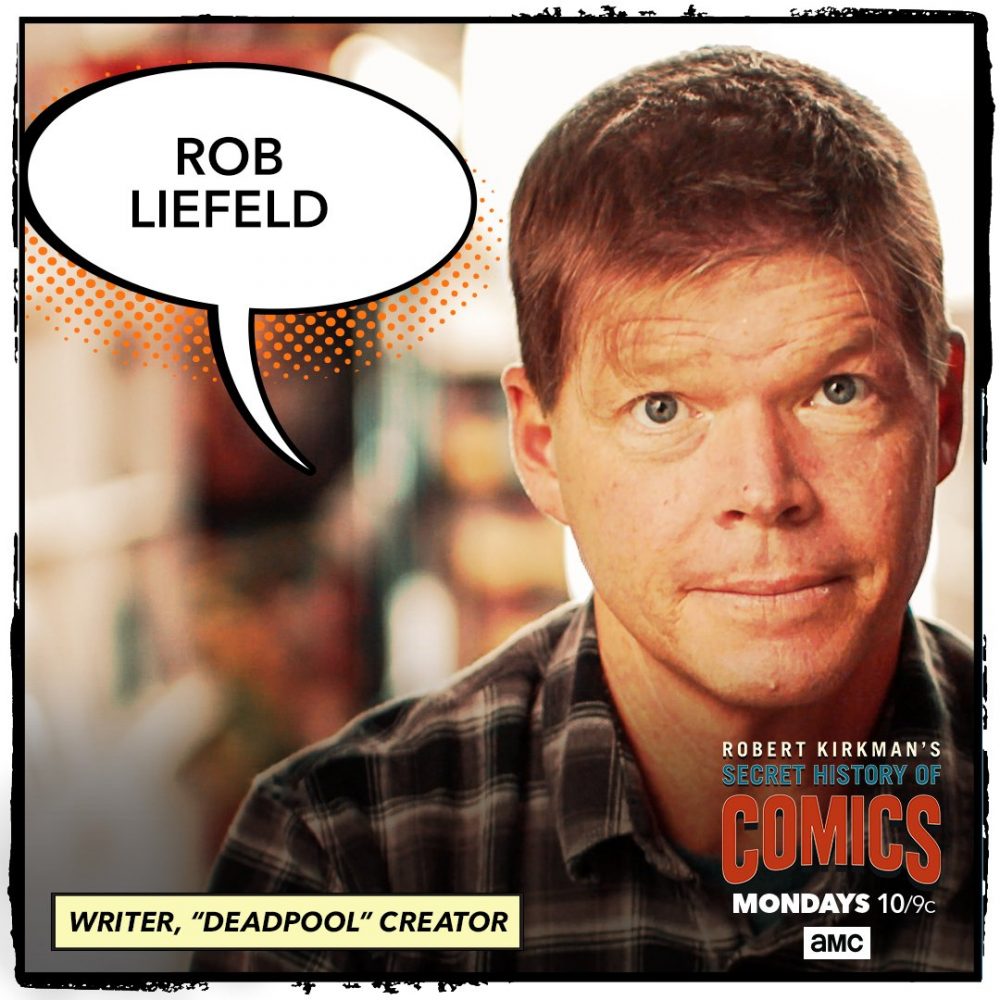
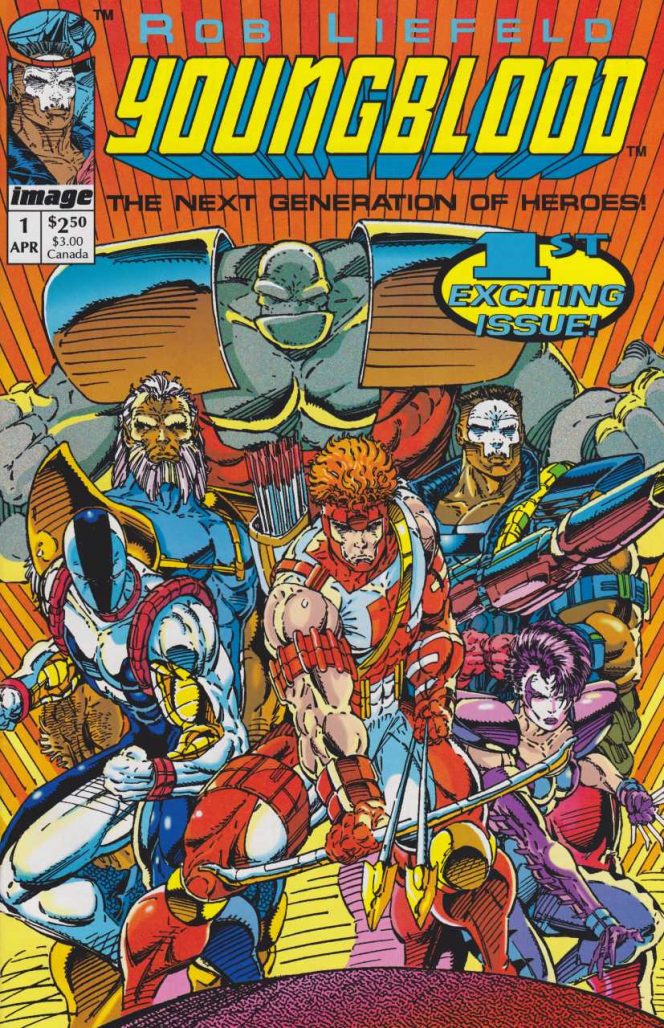
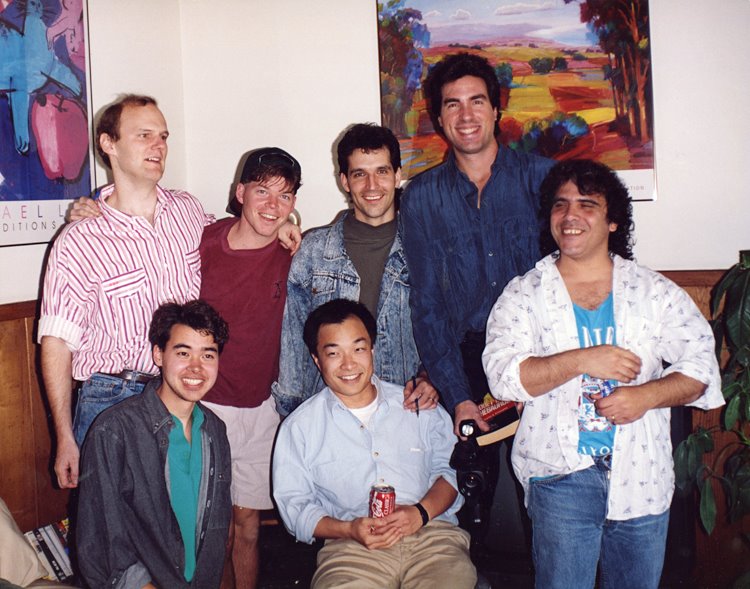
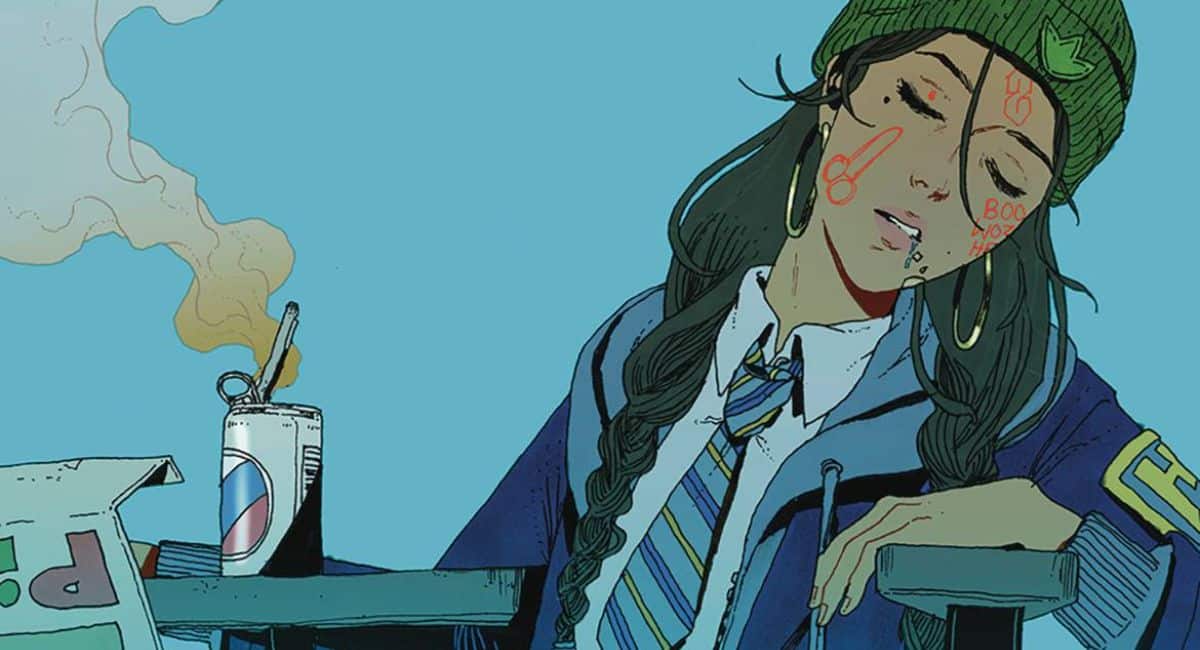
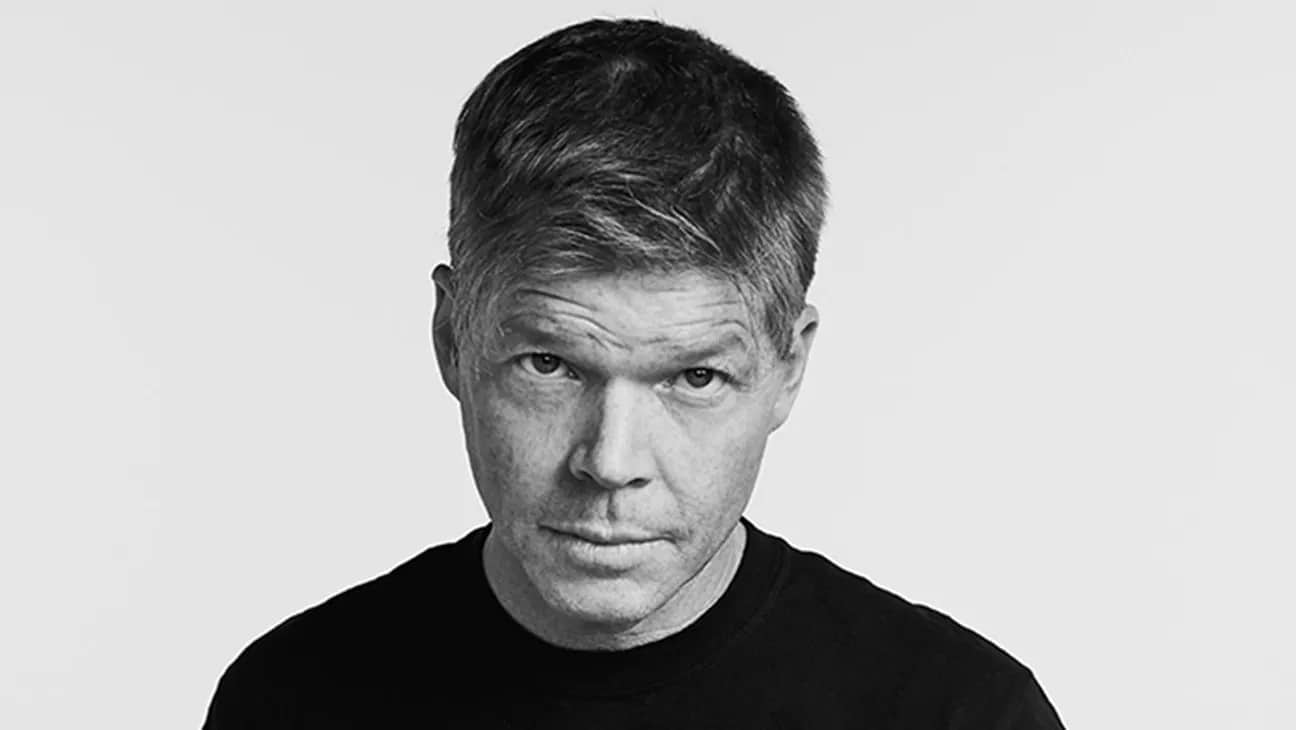
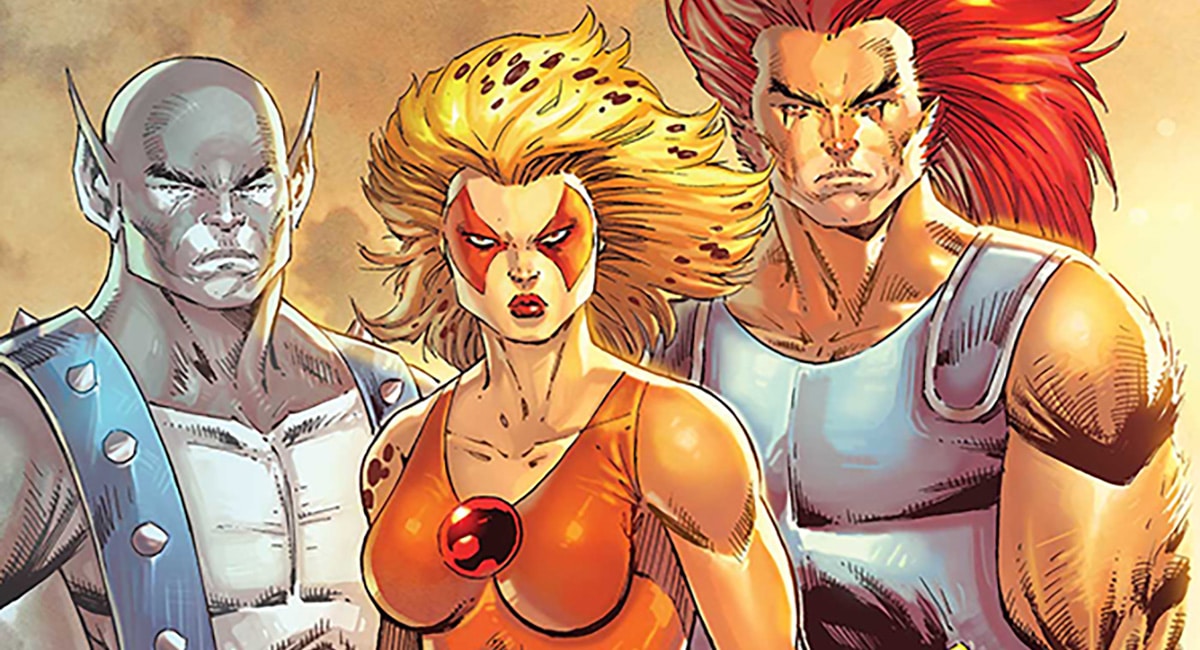



Erik’s name is LarsEn, not Larson. Profit is Prophet, and another dozen typos in there. Editing much?
I love Liefeld. He’s a very sincere guy who truly loves the medium. He’s also always been one of the biggest leaders on the creator owned front.. Plus, he’s just a nice person.
march 2018 calendar
Comments are closed.